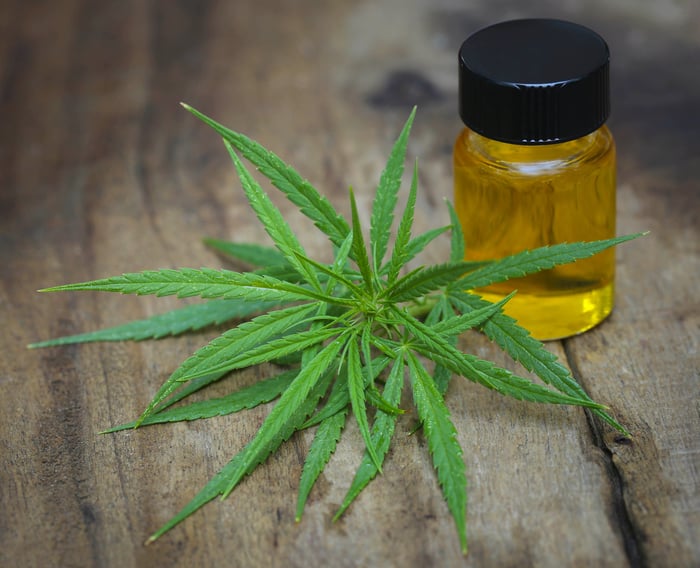The green rush is officially on. In 32 days, Canada will lift the curtain and allow recreational marijuana to be legally sold in licensed dispensaries. Although Uruguay became the first country in the world to legalize adult-use pot, Canada is set to make history by becoming the first industrialized nation to do so. And with this legalization comes the expectation of billions of dollars in annual sales flooding into the industry.
The weed industry is budding in the U.S.
Of course, there's more going on with the cannabis industry than what we're seeing in Canada. Despite the restrictive Schedule I classification of the drug in the United States, Oklahoma recently became the 30th state to pass broad-based medical marijuana laws. Of these 30 states, nine allow recreational weed consumption.

Image source: Getty Images.
It's not hard to understand why weed is so popular in the United States. According to Gallup's national survey in October 2017, an all-time record 64% of respondents favored the idea of legalizing pot nationally. A separate survey conducted by the independent Quinnipiac University in April found that an overwhelming 93% of Americans support the idea of physicians being able to prescribe medical cannabis to patients. With favorability this strong, it's no wonder that weed is finding its roots in more than half of all U.S. states.
But there have also been pockets of resistance to cannabis. For example, Republicans have consistently had a more negative view of cannabis than self-identified Democrats or Independents in surveys. Additionally, age has played a role. Generally speaking, the older the age group, the less favorability toward pot. This is why it's been suggested that the younger generation is going to be critical to the success of the marijuana industry over the long term.
Are we witnessing a new "boom" in marijuana?
However, a new study published a little more than a week ago in the online journal Drug and Alcohol Dependence suggests that the tide may be turning in the way older Americans view marijuana.

Image source: Getty Images.
According to the study, which examined data on more than 17,600 adults aged 50 and over who'd taken the National Survey on Drug Use and Health, the number of baby boomers who've used marijuana over the last decade has doubled. Overall, 9% of adults aged 50 to 64 have used marijuana within the past year, with 55% of adults in this age range having tried the drug at some point in their lives. Meanwhile, 2.9% of adults aged 65 and up have used pot within the past year, with 22% admitting to trying it at least once.
To be perfectly clear, the researchers who presented the study haven't come to any concrete conclusion as to why usage among boomers is on the rise. One possible idea is that their familiarity with cannabis during the 1960s and 1970s may allow them a more favorable view of the drug today. But the reason for this shift still requires a deeper dive by researchers.
What is interesting, though, is that as age increases, wealth typically increases. This makes the baby boomer generation a particularly lucrative target for the marijuana industry. Even though dried cannabis is often viewed as the hallmark product of the industry, it's alternatives products such as oils, edibles, and infused beverages that tend to boast considerably higher margins. Oils are an especially smart item to push toward the boomer generation given their expected medical needs in the years and decades that lie ahead.

Image source: Getty Images.
One company aiming to capitalize on this trend in the U.S. is Medical Marijuana Inc. (MJNA -4.76%), the first publicly traded pot stock in the United States. Medical Marijuana's RSHO-X brand focuses on cannabidiol-based hemp oils. Cannabidiol is the non-psychoactive component of the cannabis plant known for its perceived medical benefits. Considering that even older Americans have a positive view on medical cannabis, this is the type of company and product that could do well with boomers. Perhaps not surprisingly, Medical Marijuana Inc. recorded its strongest sales month in history in August.
Having once been an obstacle to legalization, boomers appear to be turning over a new leaf. What remains to be seen is if pot companies choose to focus their attention on this burgeoning group of older users and, ultimately, if they're a needle-mover for the marijuana industry. Only time will give us that answer.





